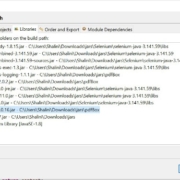We are moving toward a future where everything is going to be autonomous, fast, and highly efficient. To match the pace of this fast-moving ecosystem, application delivery times will have to be accelerated, but not at the cost of quality. Achieving quality at speed is imperative and therefore quality assurance gets a lot of attention. To fulfill the demands for exceptional quality and faster time to market, automation testing will assume priority. It is becoming necessary for micro, small, and medium-sized enterprises (SMEs) to automate their testing processes. But the most crucial aspect is to choose the right test automation framework. So let’s understand what a test automation framework is.
What Is a Test Automation Framework?
A test automation framework is the scaffolding that is laid to provide an execution environment for the automation test scripts. The framework provides the user with various benefits that help them to develop, execute, and report the automation test scripts efficiently. It is more like a system that was created specifically to automate our tests. In a very simple language, we can say that a framework is a constructive blend of various guidelines, coding standards, concepts, processes, practices, project hierarchies, modularity, reporting mechanism, test data injections, etc. to pillar automation testing. Thus, the user can follow these guidelines while automating applications to take advantage of various productive results.
Source de l’article sur DZONE







